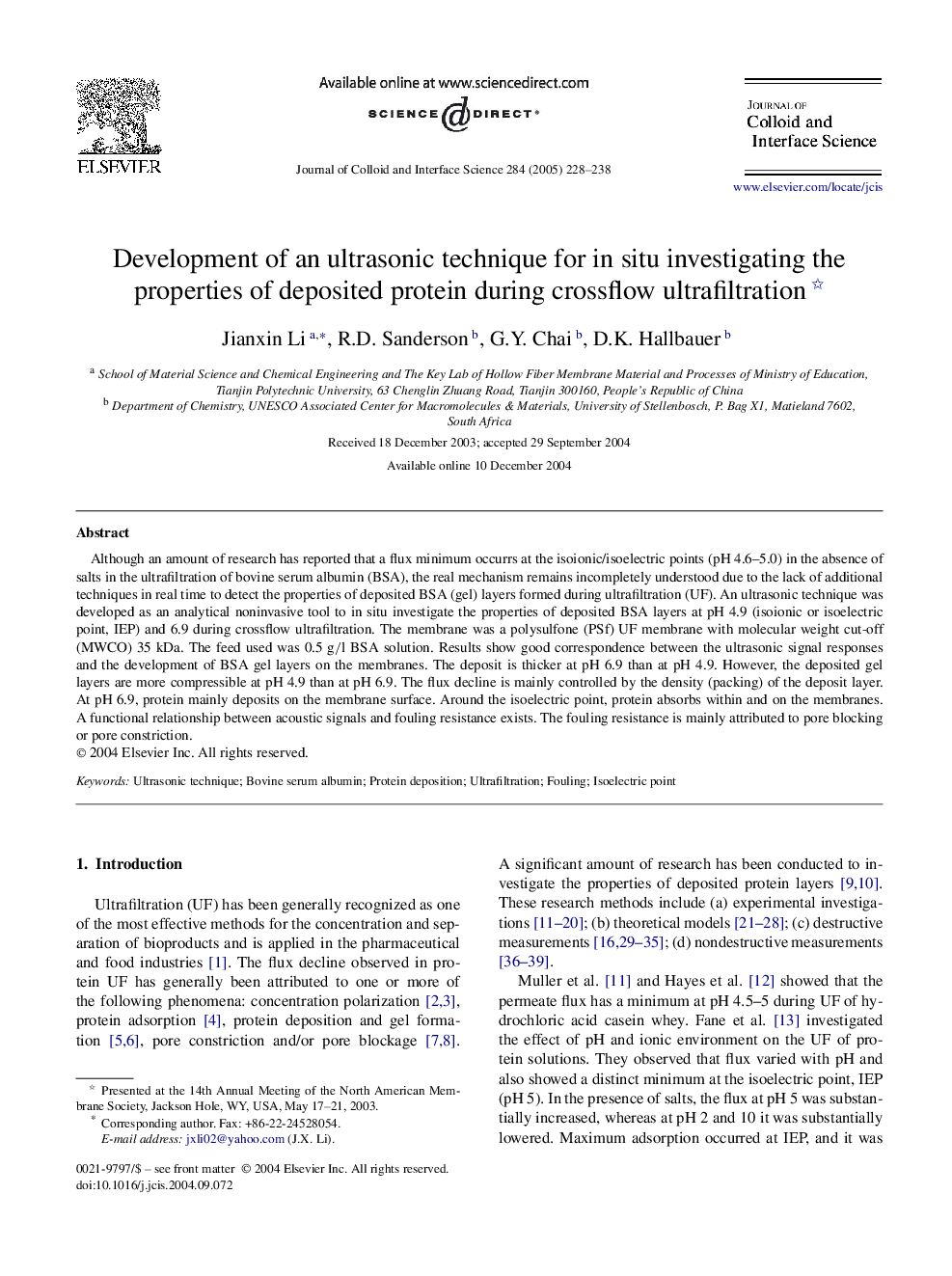| Article ID | Journal | Published Year | Pages | File Type |
|---|---|---|---|---|
| 10378174 | Journal of Colloid and Interface Science | 2005 | 11 Pages |
Abstract
Although an amount of research has reported that a flux minimum occurrs at the isoionic/isoelectric points (pH 4.6-5.0) in the absence of salts in the ultrafiltration of bovine serum albumin (BSA), the real mechanism remains incompletely understood due to the lack of additional techniques in real time to detect the properties of deposited BSA (gel) layers formed during ultrafiltration (UF). An ultrasonic technique was developed as an analytical noninvasive tool to in situ investigate the properties of deposited BSA layers at pH 4.9 (isoionic or isoelectric point, IEP) and 6.9 during crossflow ultrafiltration. The membrane was a polysulfone (PSf) UF membrane with molecular weight cut-off (MWCO) 35 kDa. The feed used was 0.5 g/l BSA solution. Results show good correspondence between the ultrasonic signal responses and the development of BSA gel layers on the membranes. The deposit is thicker at pH 6.9 than at pH 4.9. However, the deposited gel layers are more compressible at pH 4.9 than at pH 6.9. The flux decline is mainly controlled by the density (packing) of the deposit layer. At pH 6.9, protein mainly deposits on the membrane surface. Around the isoelectric point, protein absorbs within and on the membranes. A functional relationship between acoustic signals and fouling resistance exists. The fouling resistance is mainly attributed to pore blocking or pore constriction.
Keywords
Related Topics
Physical Sciences and Engineering
Chemical Engineering
Colloid and Surface Chemistry
Authors
Jianxin Li, R.D. Sanderson, G.Y. Chai, D.K. Hallbauer,
